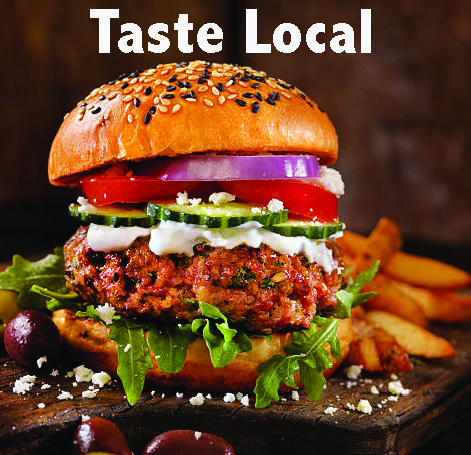The City of Fernie is challenging its residents to take part in reducing your food waste.
The City of Fernie supports the Love Food Hate Waste Program which is a national initiative to reduce food waste in Canada. The initiative aims to change Canadians’ behaviors around food and dramatically reduce the significant amount of food wasted across the country every day.
Food Waste in Canada
One third of all food produced globally is wasted. The truth is that Canadians are throwing out more food than they realize – food that could, at one point, have been eaten.
Inevitably, some food waste is unavoidable – this is the food that can’t generally be sold or eaten, such as bones, vegetable peelings, egg shells, tea bags, and coffee grounds.
Avoidable food waste is the edible food that ends up in the compost or in the bin. Unfortunately, we often waste good food because we buy too much, cook too much, or don’t store it correctly.

In 2017 the National Zero Waste Council conducted research on household food waste in Canada, and the results were astonishing.
– 63% of the food Canadians throw away could have been eaten.
– For the average Canadian household that amounts to 140 kilograms of wasted food per year – at a cost of more than $1,100 per year!
– For Canada as a whole, that amounts to almost 2.2 million tonnes of edible food wasted each year, costing Canadians in excess of $17 billion!
All types of food are wasted, but in Canada the most prominently wasted foods by weight are:
Vegetables: 30%
Fruit: 15%
Leftovers: 13%
Bread and Bakery: 9%
Dairy and Eggs: 7%
To put that in perspective, every day in Canada we waste:
470,000 heads of lettuce,
1,200,000 tomatoes,
2,400,000 potatoes,
750,000 loaves of bread,
1,225,000 apples,
555,000 bananas,
1,000,000 cups of milk
and 450,000 eggs
Environmental Toll
Wasting food means we are wasting the resources used to grow, produce and distribute that food to consumers. Getting food from farm to table, and then managing or disposing of food as waste, also has a significant carbon footprint – contributing to Canada’s greenhouse gas emissions. Canada’s 2.2 million tonnes of avoidable household food waste is equivalent to 9.8 million tonnes of CO2 and 2.1 million cars on the road!
Diverting food waste to composting is better than sending it to a landfill, but preventing food from being wasted in the first place is an even better way to lessen our impact on the environment. Every tonne of household food waste that is avoided is the equivalent of taking one car off the road each year.

The Good News
The good news is that this problem is solvable. If we all start using up the food we buy, together we can make a big difference. We’re asking people to start by making just one small change. Love Food Hate Waste Canada offers simple steps to reduce food waste, from storing food so it stays fresh to using up leftovers to meal planning.
Planning meals in advance can seem intimidating. But it doesn’t have to be. (No, really.) Arm yourself with these ten easy tips and you’ll be scheduling meals and saving food like a pro in no time at all.
10 Easy Tips
1. Don’t Start From Scratch
Successful meal planning doesn’t have to mean hours spent with a cookbook. Start with your go-to meals. Repeat them every week or two. Then, if you’re up for it, toss in something new every once in a while.
2. Check The Refrigerator
Next week’s meals get their start in the refrigerator. See what needs to be used up and then think of a meal to make with those items. Check your pantry for the rest of the ingredients and add missing pieces to the shopping list. Voilà. Meal one? Check.
3. Use Portion Planners
Portion calculators can help you feed a big group, but they can offer insight too – like why there’s always so much extra rice.
Try the portion planning tool from Love Food Hate Waste UK.
4. Have Kitchen Essentials Handy
Stock up on two or three grains, cooking fundamentals, key spices and “hero” sauces like barbecue and peanut sauce. These items can come to the rescue and bring new life to old meals.
5. Use Building Blocks
Pick two types of protein, one or two grains and a vegetable medley to make at the beginning of the week and incorporate into different meals. For instance, a sauté of broccoli and peppers can be used as a side one night, spooned onto enchiladas another night and worked into a soup or meatloaf later in the week.
6. Think Double Duty
Planning a Tuesday taco night? Think about other ways to use those tortillas. Asian salad wraps, perhaps? Ingredients sometimes come in larger portions than we need. If you plan a second meal around them, it’s easier to avoid the end-of-the-week overload.
7. Schedule A Lazy Night
We often go to the store hoping to prepare fresh meals all week, but the truth is — we don’t have the time or energy to cook every night. Plan a few lazy nights that don’t require cooking and take the opportunity to order takeout or dine with friends.
8. Go Fresh Fruit
To preserve freshness and nutrition, use perishables like seafood and meat earlier in the week and save staples (pasta, dairy, omelets) for later in the week. Some greens, like kale and chard, will stay fresh longer than others.
9. Lean On Frozen Ingredients
Frozen foods have nearly all of the nutrients and sometimes more than their fresh counterparts. And they don’t go bad. Plus, frozen vegetables fill in the gaps. You can buy fresh vegetables in smaller amounts, without ending up veggie-less at the end of the week.
10. Cook And Freeze
Soups, stews, casseroles and lasagna can all be made in large batches and then frozen and defrosted when you need a quick dinner. To keep it easy, always freeze in the portion sizes you’ll want to defrost.
Content courtesy of SaveTheFood.com and Love Food Hate Waste Canada

























